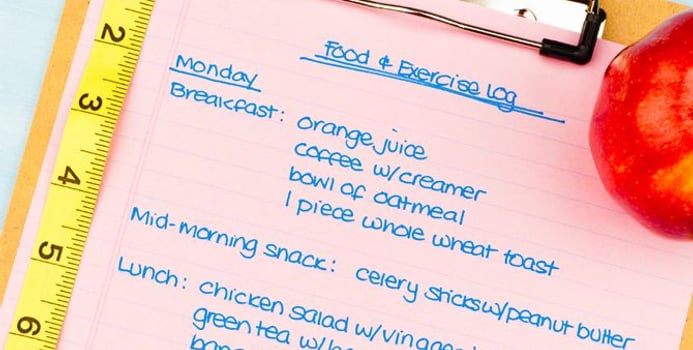One of the key components of eating healthy is to plan ahead, which increases the likelihood that you will be successful in achieving and maintaining weight loss. Meal planning is a major part of setting yourself up for victory, allowing you to accomplish your wellness goals. All too often, poor food choices are made when you haven't planned out your meals and snacks. Then, when hunger strikes--especially if you've waited too long to eat--you'll reach for whatever is quick, convenient, and tasty (and often unhealthy).
A Few Basic Tips:
- Before you start planning your meals, take a quick inventory of your fridge, freezer, and pantry. You can examine what you need to use up and also avoid purchasing ingredients that you already have on hand but may have forgotten about because they got pushed to the back.
- Jot down recipes ideas instead of focusing on exact recipes. For example, start with a recipe "framework," such as planning to make a casserole, salad, soup, stir-fry, pasta dinner, or egg dish. Having a meal idea as a jumping-off point will allow you to swap out certain ingredients for others, allowing for more flexibility and individualized choices.
- Select healthy foods that you can use in multiple meals, which will cut down on prep time and also save you money.
- Make a shopping list. It seems simple, but if you forgo this step, you may end up making impulse purchases. Organize your list based on the layout of the grocery store you frequent -- this will help save you time. Making a list of nutritious ingredients you need for the week and sticking to that list will ensure you'll wind up with a healthy start to each of your meals.
Figure Out Your Favorites
Start off by listing 10-15 of your favorite dishes -- those go-to meals you eat often and can prepare easily. For each day of the week, write out your main dishes, side dishes, snacks, and occasional desserts, choosing from that list of 10-15 dishes. Focus on making your plate half-full of non-starchy vegetables and fruits, a quarter-full of lean protein, a quarter-full of whole grains, and include a serving of dairy (or nondairy calcium-rich alternative).
Write Out Your Menu
On a calendar or other grid-like sheet listing an entire week, physically write out your week's menu. Begin by filling in the week with your 10-15 favorite dishes and as you get more comfortable with menu planning, start adding new recipes and putting new twists on your standby dishes in order to prevent boredom.
Prep Produce on the Weekends
Take your least busy day of the week, which for most of us is a Saturday or Sunday, and do most of your produce prep for the upcoming week on that day. Wash and prep all of your produce for a week's worth of meals and snacks. Chop up veggies and fruits and place them in zip-top bags or in reusable containers. This way you only have to get your cutting board and knife dirty one time a week, and having easy access to ready-to-go fruits and veggies will ensure you're getting the recommended amounts.
Select Ingredients You Can Use Across Several Meals
To spend less time in the kitchen, cook up large batches of lean proteins and whole grains that you can use in more than once recipe. For example, you could bake a whole chicken and then use the meat for soups, stews, casseroles, salads, pasta dishes and sandwiches. Boil up a large pot of quinoa or brown rice and use half in a veggie-heavy stir-fy dish and the other half in a soup or salad the next day.
Also, consider making a double-batch of any recipe and eating half for dinner, and saving the other half for lunch the next day. This way, you're only cooking one time and you'll avoid getting unhealthy take-out when you're strapped for time at work (keeping your waist slim and your wallet fat).
Keep Healthy Staples on Hand
Stock your fridge, freezer, and pantry with nutritious staple ingredients that can be used across a variety of meals. Equip your kitchen with frozen and canned fruits and vegetables, canned beans and fish, canned tomato products, dried fruits, nuts and seeds, herbs, spices, oils, whole-grains, and vinegars. Then, purchase fresh produce and other perishables weekly based on your menu.
Kari Hartel, RD, LD is a Registered, Licensed Dietitian and freelance writer based out of St. Louis, MO. Kari is passionate about nutrition education and the prevention of chronic disease through a healthy diet and active lifestyle. Kari holds a Bachelor of Science in Dietetics from Southeast Missouri State University and is committed to helping people lead healthy lives. She completed a yearlong dietetic internship at OSF St. Francis Medical Center in Peoria, IL, where she worked with a multitude of clients and patients with complicated diagnoses. She planned, marketed, and implemented nutrition education programs and cooking demonstrations for the general public as well as for special populations, including patients with cancer, heart disease, diabetes, Alzheimer's disease, obesity, and school-aged children.




